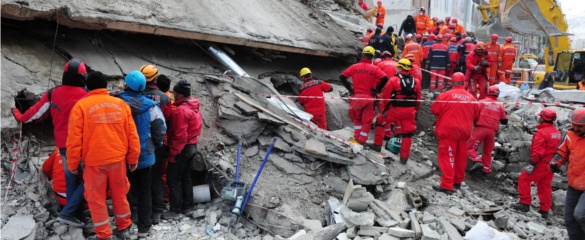Advantages of COFDM
COFDM modulation has very strong attenuation resistance, COFDM modulation enables the transmission from the end user to a plurality of subcarriers, and the signal can be kept very much longer than the signal kept in a single-carrier system correspondingly, so COFDM has a stronger resistance for impulse noise and fast channel attenuation resistance. COFDM has higher utilization of frequency and allows overlapping orthogonal subcarriers waves as sub-channels, rather than the traditional use of guard bands separating the sub-channels, so it improves the frequency efficiency, and maximizes the use of spectrum resources.

As for high-speed data transmission, COFDM has its self-adaptive modulation mechanism which enables subcarriers to choose different modulation methods like QPSK, QAM, 16QAM or 64QAM according to different channel conditions and background noises. If the conditions are good, then adapt itself to the high-efficiency modulation, if the conditions are bad, then adapt to the anti-interference modulation. So it can reliably adapt to a high-speed data transmission.
It has strong Inter-Symbol Interference (ISI) ability, ISI is the major interference besides noise in digital communications. COFDM by using the cyclic prefix has the strong ability of ISI.
Ease of use in combination with a variety of other methods, COFDM can be used as a modulation method, besides, it can be easily combined with many kinds of multiple access technology, providing access for multiple users at the same time. You can allow multiple users to simultaneously use the COFDM information technology for transmission.
Applications of COFDM Device
COFDM modulation solved the difficult problems of "Non-Line-of-Sight" and "Mobile" wireless broadband transmission when rate is over 2Mbps, so it has been widely applied in mobile communications, video transmission and monitoring systems such as digital audio broadcasting project (DAB), high-definition TV (HDTV) broadcasting, Health Care, Mobile Communication (CDMA + OFDM), wireless LAN (IEEE 802.1la), broadband wireless access (BWA), high-quality videos in real-time monitoring (military, broadcasting, safety, maritime defense and other industries).
High-speed Real-time Mobile Wireless Transmission
The system can collect real-time emergency scene video, voice, data, etc. via a public communication network or private communication network system delivered to each commending center. Officers at all levels of command can understand the situation from the computer directly to take effective measures in real-time command. So it is widely applied to natural disasters emergency services. The system can help to save a lot of processing time and reduce the losses caused by disasters
.
Real-time Maritime Wireless Transmission
Real-time monitoring of maritime wireless transmission are good for coastal defense, maritime, port inspection and other industries. Real time monitoring of maritime surveillance zone can be manipulated through the whole process with live video, voice, data and control. This system can help to make maritime commanding, monitoring with better efficiency.

Live Broadcasting Video Transmission
When broadcast lively the sports games, the clarity of the video can be greatly improved by COFDM transmission.
Public Mobile Communication System
IEEE 802.1la has already been eyeing on 5GHz band and provides high-speed data transmission by OFDM.

As a conclusion, COFDM modulation solved the difficult problems of "Non-line of Sight" and "Mobile" wireless broadband transmission when speed is over 2Mbps, COFDM can capture videos at high speed and transmit high quality real time videos, make users gain exceptional freedom in news collecting, live broadcasting, real-time monitoring applications.
In early 1996, the European DVB Project finalized what is now called the "Common 2k/8k Specification". This specification is another important corner-stone of digital video broadcasting in Europe and numerous other countries in the world. The terrestrial system, termed DVB-T, is based on the channel-coding algorithms the DVB Project had earlier devised for digital television on cable and satellite. The modulation scheme that is used for DVB-T is OFDM (orthogonal frequency division multiplexing), which has been assigned the name of COFDM in conjunction with the channel coding. Two variants are described, one employing 1705 individual carriers in an 8 MHz channel ("2k variant"), the other employing 6817 carriers ("8k variant"). For each of the variants four specific types of guard interval have been defined. Each individual carrier can be modulated either by QPSK, 16QAM, 64-QAM or hierarchical modulation.